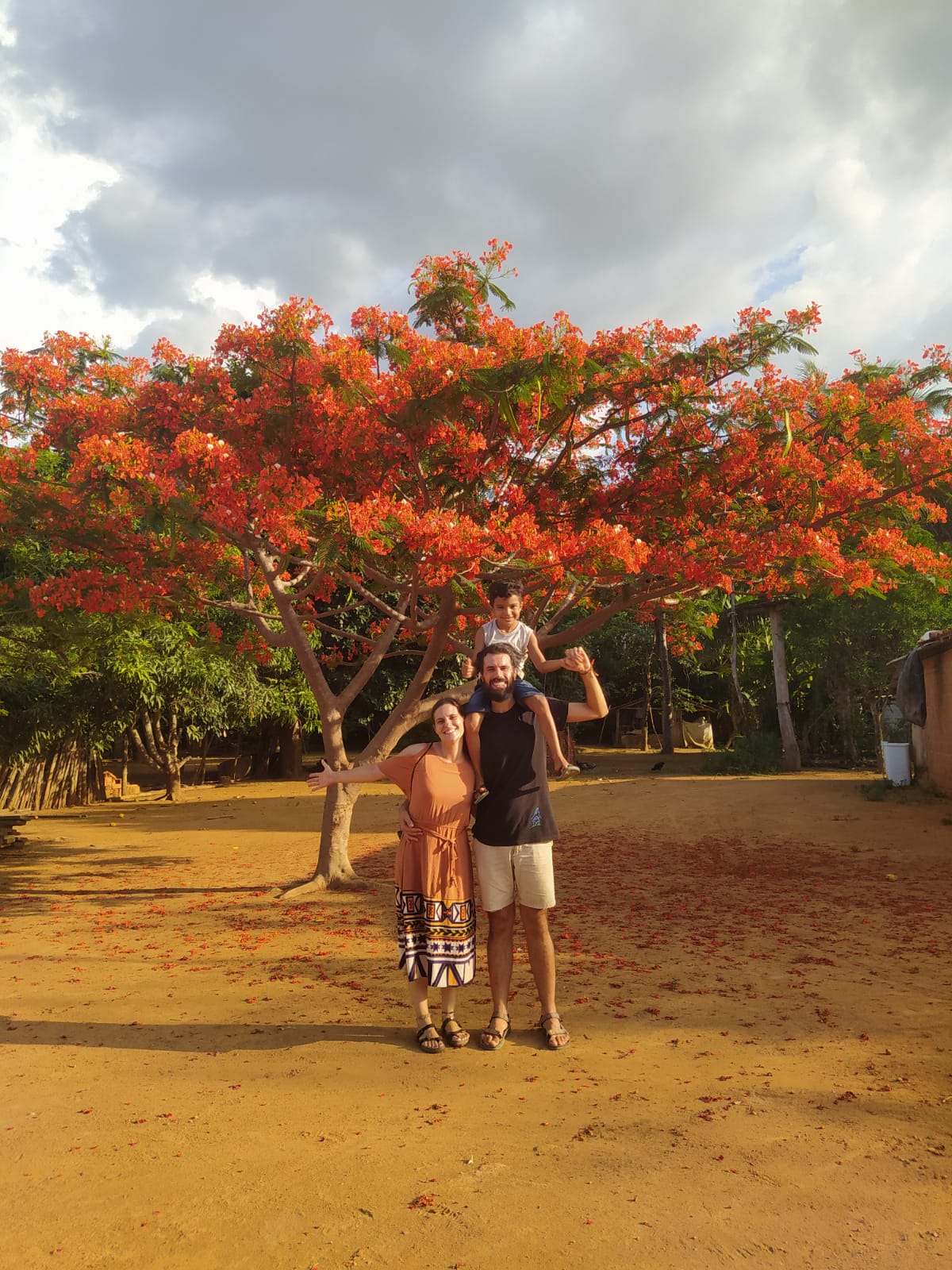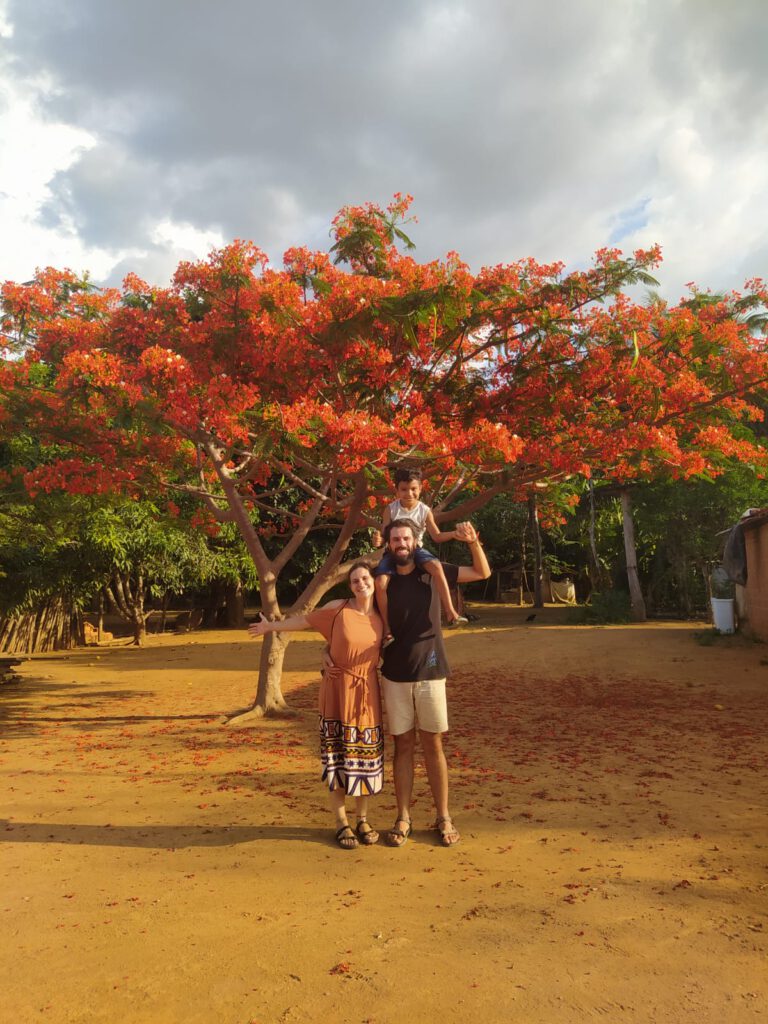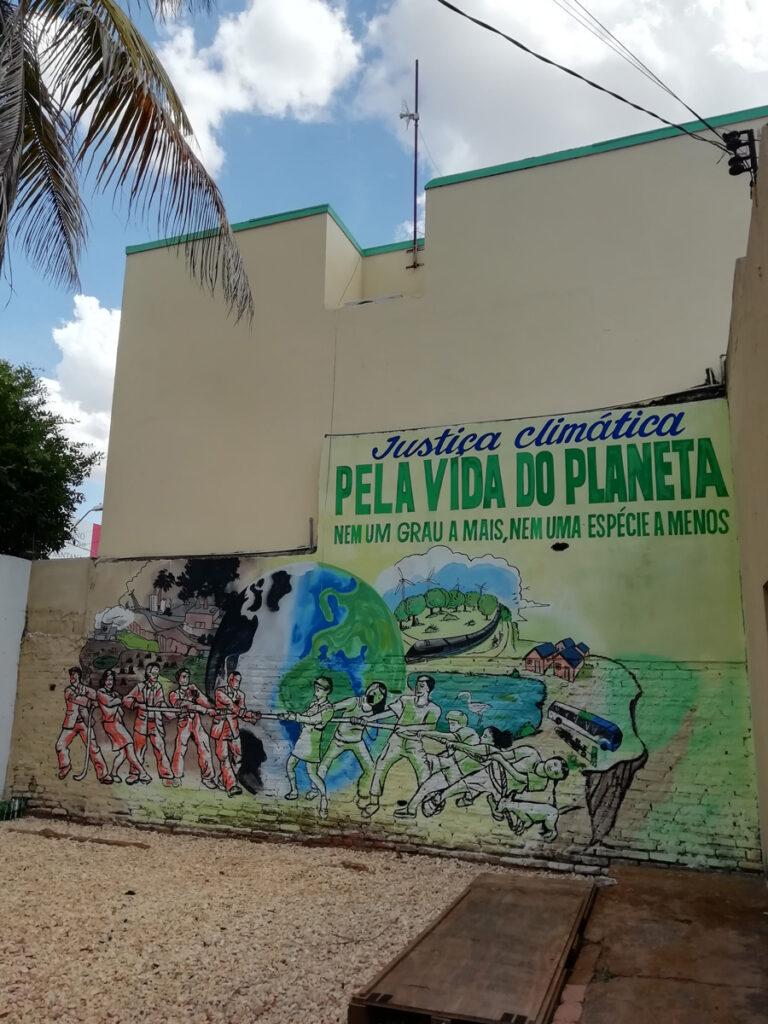“HELLO, WE ARE ANNA AND GABRIELE, AND THIS IS CIRANDA, THE PODCAST THAT TELLS OUR MISSION EXPERIENCE IN BRAZIL. IN WHICH WE TRY TO TAKE YOU INTO THE EVERYDAY LIFE CHOICES OF THOSE WHO LIVE IN THIS PART OF THE WORLD.”
Even today, after a morning of pouring sun, the rain visited us, half an hour of a powerful storm that dissolved in a few seconds, like the rapid passage of a plane. The rainy season has become this, a short cold shower, everyone wonders if it is a coincidence that it no longer rains for entire weeks as it happened in the past, but it is clear that climate change is screaming loudly here too.
You don’t reach these levels overnight, there is always a path and a story behind it, and the history of this land has very deep roots.
It all started a long time ago. In fact, from the time of the colonial invasion to today, Brazil has never implemented a popular agrarian reform. Consider that in a huge area like that of Brazil, only 1% of landowners own almost 50% of the total cultivable area in the country, and half of these large properties are totally unproductive and could therefore be expropriated for agrarian reform. Brazil is also the largest territory in the world in terms of possible arable land. It is for this reason that for decades the right to land has been conquered and not received by right, it is a fight against the system that has seen the birth of large movements such as that of the LANDLESS (MST), movements that fight to be able to live there where many, with roots in the land and fields, have always wanted and would like to continue to live.
Thus the idea of an occupation was born: hundreds of families reunited, organized themselves, occupying large plots of land to attract the attention of the federal government. Raimunda, waiting to receive this land, lived camped with her family for years, in tents made up of plastic sheets and 4 sticks, inside which there were pots and coal for cooking, clothes, hammocks to hook between a tree and the other, and then children born in the middle of the woods, raised far from life in the city. All in a true sense of community, of struggle, of life shared with little, waiting for the big day when we can finally receive a piece of land to build our own homes, surrounded by trees and fields to cultivate.
The inhabitants of the Francisco Romao Assentation have won the right to the land after 10 years of living in camp.
When they arrived in that territory they discovered that it was Government land, which had been occupied by a landowner illegally, the whole area had already been deforested to create an immense pasture of dairy cows, destroying the surrounding vegetation.
This phenomenon of illegitimate land appropriation is known as “Grillagem”, a practice of forced aging of false documents that are placed in a box with crickets, making them yellowed and gnawed, giving them an ancient and more credible appearance, a phenomenon of forgery to illegally take possession of vacant or third-party land. The families denounced this illegality to ask the government for the possibility of having part of that land and being able to cultivate and reforest it. After years of struggle and reclaiming the land, each family managed to have a property where they could do what they had always dreamed of: living off the land in a sustainable way. It’s an incredible story that of the assentamentos, places where life flows to the rhythm of the countryside.
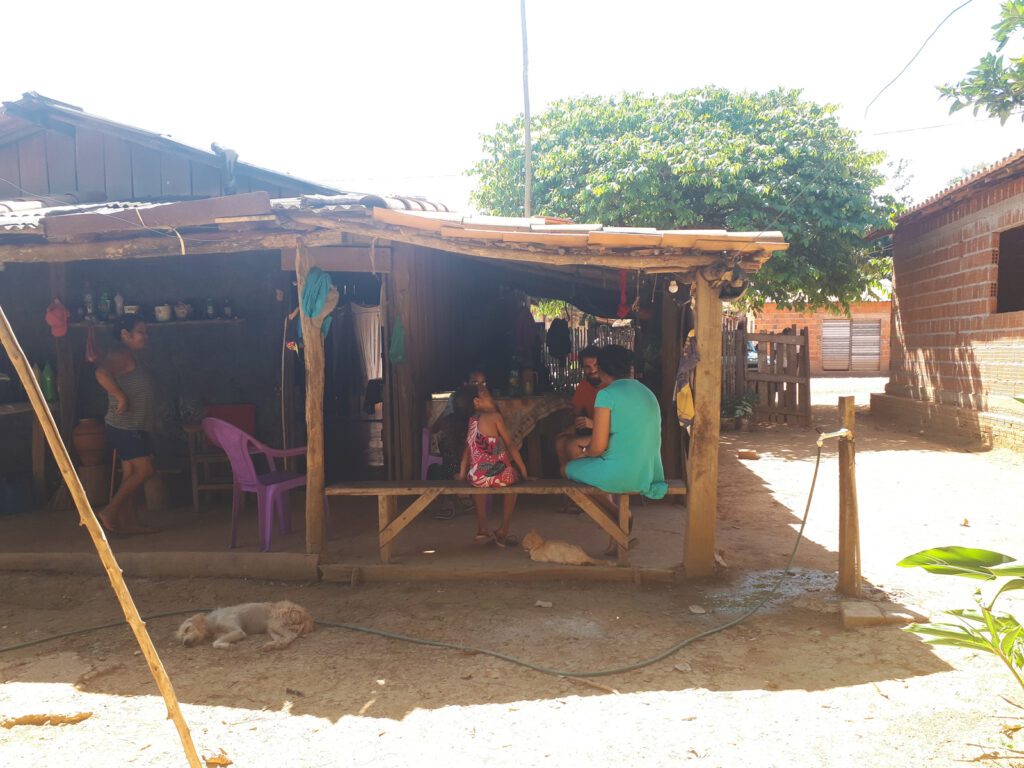
You enter the settlement on dirt roads, a bright red earth, and you are immediately surrounded by houses and courtyards full of fruit trees and medicinal plants of all kinds, of which the families know every benefit and valorize them for purposes to the last sheet. When we go to visit them they tell us with great nostalgia about those times gone by: the times of precariousness, but also of union, happiness and sharing. The houses were initially made of mud and straw, people lived very little. Life in absence was a constant sharing of one’s possessions, the goal was for everyone to be able to live off that land and for issues to be resolved together, under the canopy in the center of the town, a space dedicated to community meetings. Together we decided what to grow (corn, beans, castanha), we decided where to build the school, together we fought to get tractors, we fought to have a public health building. These were the foundations for allowing a dignified life, and they were built together. A dignified life that allowed for at least 3 meals a day, with rice, beans and cassava, basic elements of Brazilian cuisine. Throughout this process, women were the true protagonists, taking care of the house, taking care of the children and helping the men in the fields, a true example of strength and leadership.
Community, solidarity and doing together, this is the common thread that has made it possible to win many battles and with which the assentamentos were built and still resist, places of life, struggle and defense of peasant life. Farming families have always had one great goal: to plant and harvest food, but also to reforest and protect native vegetation. This is why we called them Guardioes: the guardians. Guardians of nature, guardians of the well-being of the soil and of that piece of the Amazon that has been entrusted to them. Guardians of the community and of peasant life, of the fight against a system that wants to take away the life of the least and give strength to the powerful. Guardians of that land which has now been completely destroyed.
In the next episode you will know other stories of women who have chosen to fight in the face of all this. We wish you a good continuation and a happy and peaceful Easter and resurrection in the Lord.
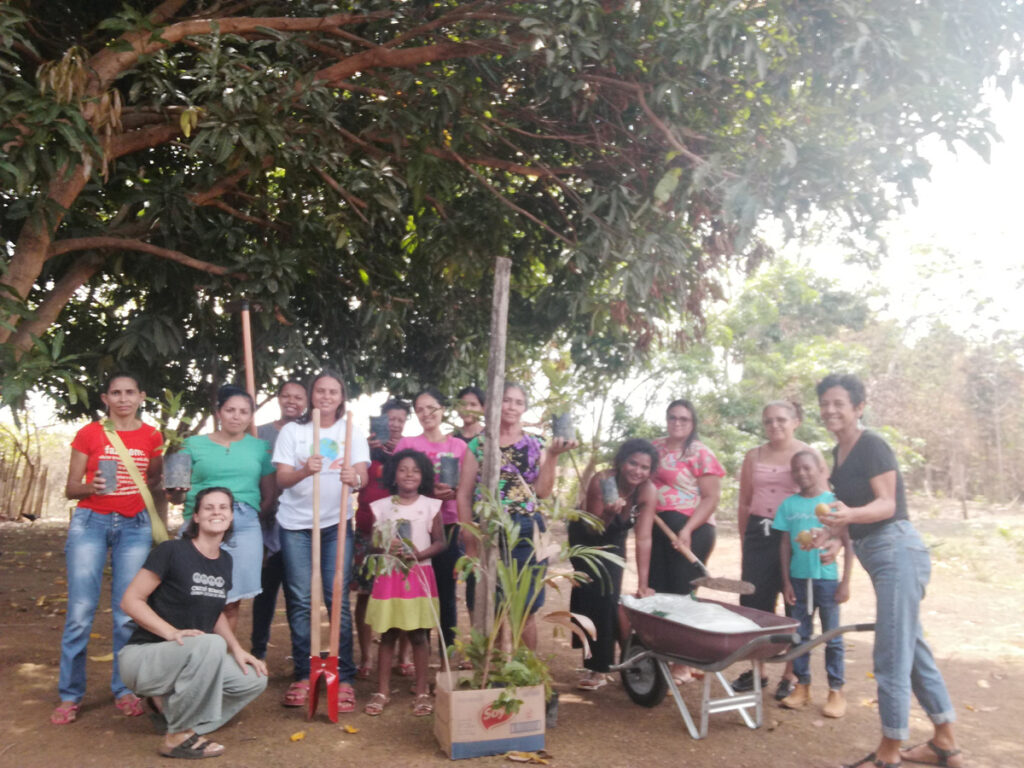
Anna and Gabrielle, CLM in Brazil




